How To Plant And Grow A Fig Tree (And Why They’re Not Suited To Every Garden)

TREES > FIG

Elizabeth is a Permaculture Garden Designer, Sustainability Consultant and Professional Writer, working as an advocate for positive change. She graduated from the University of St. Andrews with an MA in English and Philosophy and obtained a Diploma in Applied Permaculture Design from the Permaculture Association.
Reviewed By COLIN SKELLY

Colin is a Horticulturist and Horticultural Consultant with experience in a range of practical and managerial roles across heritage, commercial and public horticulture. He holds the Royal Horticultural Society’s Master of Horticulture award and has a particular interest in horticultural ecology and naturalistic planting for habitat and climate resilience.
FIG GUIDES
Fig Trees are not necessarily suited to every garden and are not the easiest fruit to grow at home, but they can be very rewarding additions in a suitable spot.
Growing your own figs at home could be a wonderful new string for your gardening bow.
In this guide, we will help you decide whether a fig tree is right for you, and if so, which options you might consider.
Overview
| Botanical Name | Ficus carica |
| Common Name(s) | Fig Tree |
| Plant Type | Fruit Tree |
| Native Area | Mediterranean and West Asia |
| Hardiness Rating | H4 |
| Foliage | Deciduous |
| When To Plant | September – November |
| Harvesting Months | August – September |
| When To Prune | February |
Sunlight
Preferred
Full Sun
Exposure
Sheltered
Size
Height
2.5 – 4M
Spread
2.5 – 4M
Bloom Time
Late Summer / Early Autumn
Soil
Preferred
Chalk, loam or sand
Moisture
Moist but well-drained
pH
Alkaline or neutral
Figs are the fruits of Ficus carica, a small tree which is native to the Mediterranean region and western Asia, but which is commonly cultivated in warmer temperate regions and other climate zones.1Common Fig. (2003, January 1). Science Direct; Elsevier BV. https://doi.org/10.1016/b0-12-227055-x/00463-6
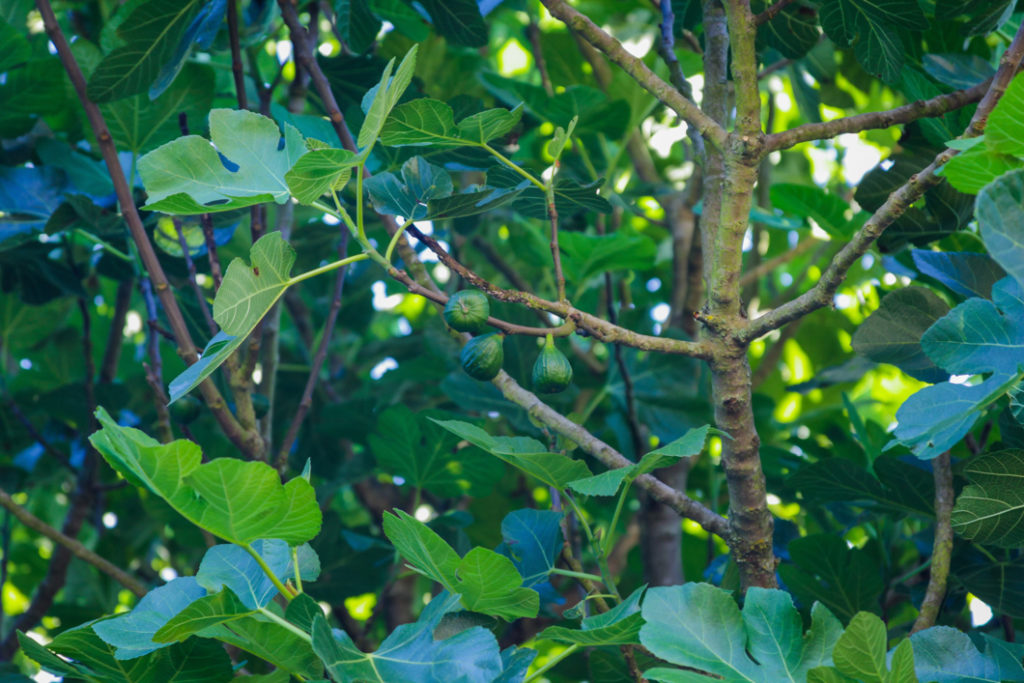
The edible fig is believed to have been one of the first plants cultivated by human beings – grown even before humans grew agricultural crops like wheat, barley and legumes.2Noble Wilford, J. (2006, June 1). Figs Believed to Be First Cultivated Fruit. The New York Times. Retrieved March 15, 2023, from https://www.nytimes.com/2006/06/01/science/01cnd-fig.html
It is commonly prized for its edible fruit, but is also used as an ornamental garden tree.
Common Varieties
Some of the most common F. carica varieties include:
‘Brown Turkey’

This is the most popular type for outdoors growing in the UK.
‘Brunswick’
Another popular hardy variety that is suitable for UK cultivation.
‘Chelsea’
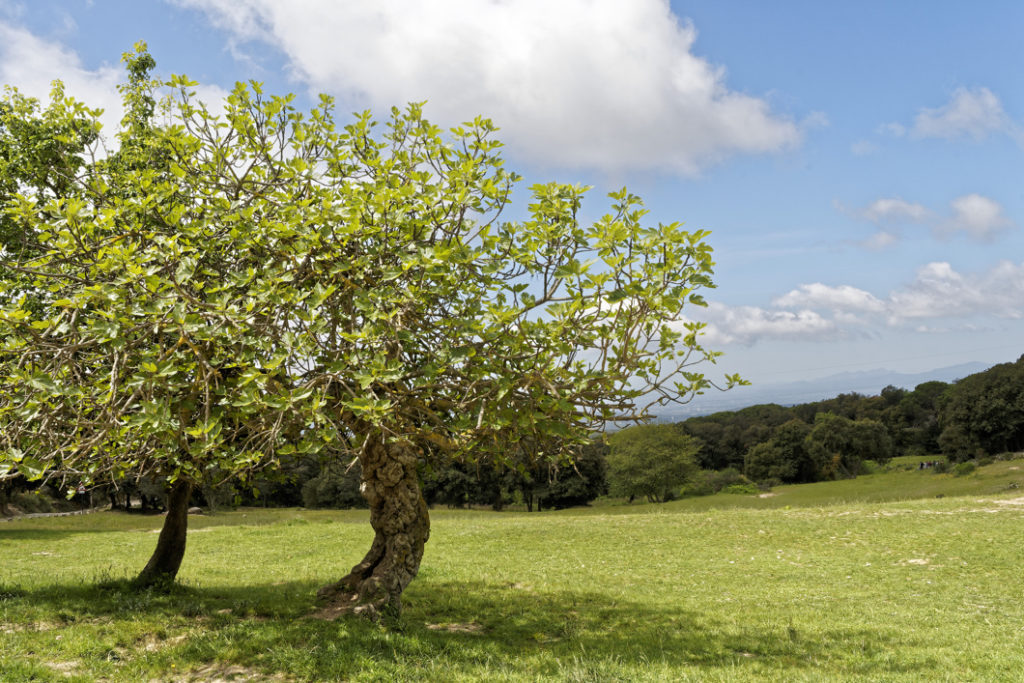
‘Chelsea’ can be found near Chelsea Bridge, fruiting reliably outdoors, with good cold hardiness.
‘Ice Crystal’
This variety does have small sweet fruits, but it is usually grown for its ornamental foliage.
‘Madeleine des Deux Saison’
Suited to hotter gardens in the south, where this variety can fruit in June and September.
‘Violette de Bordeaux’
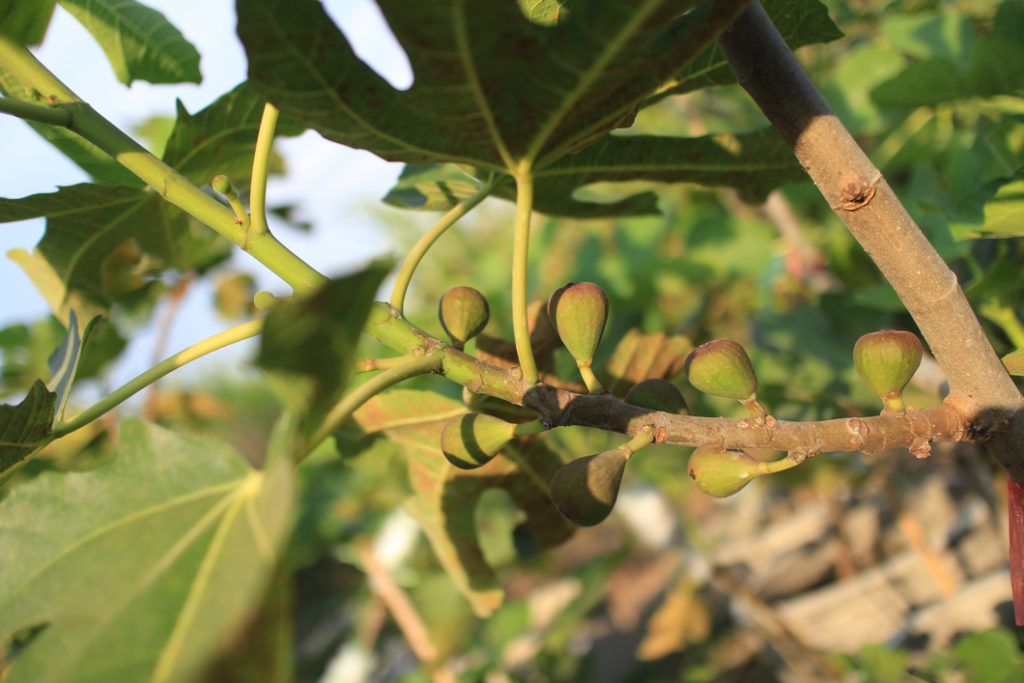
‘Violette de Bordeaux’ is a hardy fig from the gardens of Versailles.
There is also a dwarf mutation of this type called ‘Little Miss Figgy’ than can be grown in large pots on a patio.
Other varieties include:
- ‘Sultane’
- ‘Panachee’
- ‘Doree’
- ‘Dalmatie’
Growing From Seed
Fig trees are usually purchased and planted, but it is also possible to grow a fig tree from seed.
Just remember that supermarket figs are likely not to be suitable for UK cultivation, and also that it will take up to 3 years before your fig tree starts to bear fruit.
Seeds must be soaked for 24 hours prior to planting.
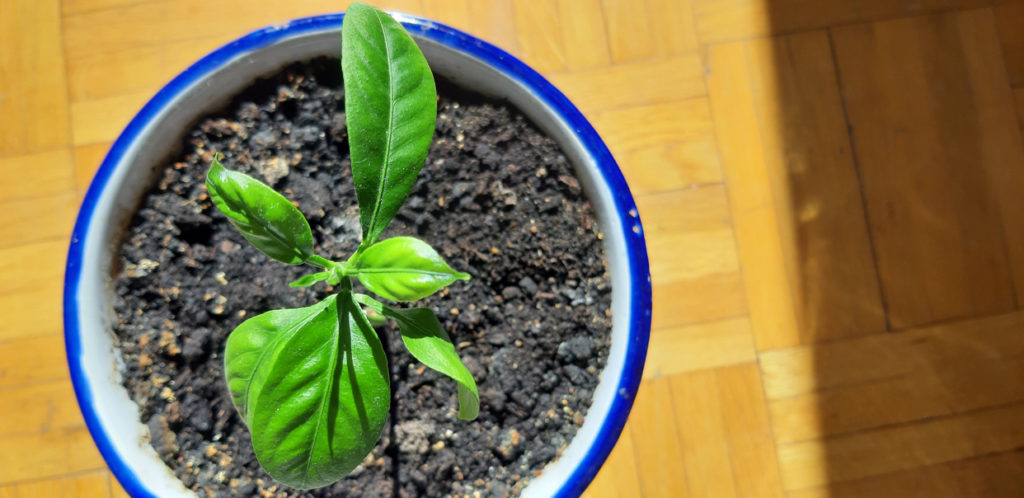
Once the seeds are fully hydrated and have developed a small white root, plant into a suitable free-draining potting mix, around 2cm deep.
Water regularly and keep moist and warm, and new growth should emerge within a couple of weeks.
Keep the young sapling in a warm and sunny area, fertilising and watering regularly, and plant out into the final growing position once the tree is well established at around 40cm tall.
Planting
The best time to plant fig trees is in autumn, between September and November, so that the tree can establish roots before cold weather sets in.
However, you can also plant in the early spring.
Fig trees should be planted either in deep holes in the ground or in containers.
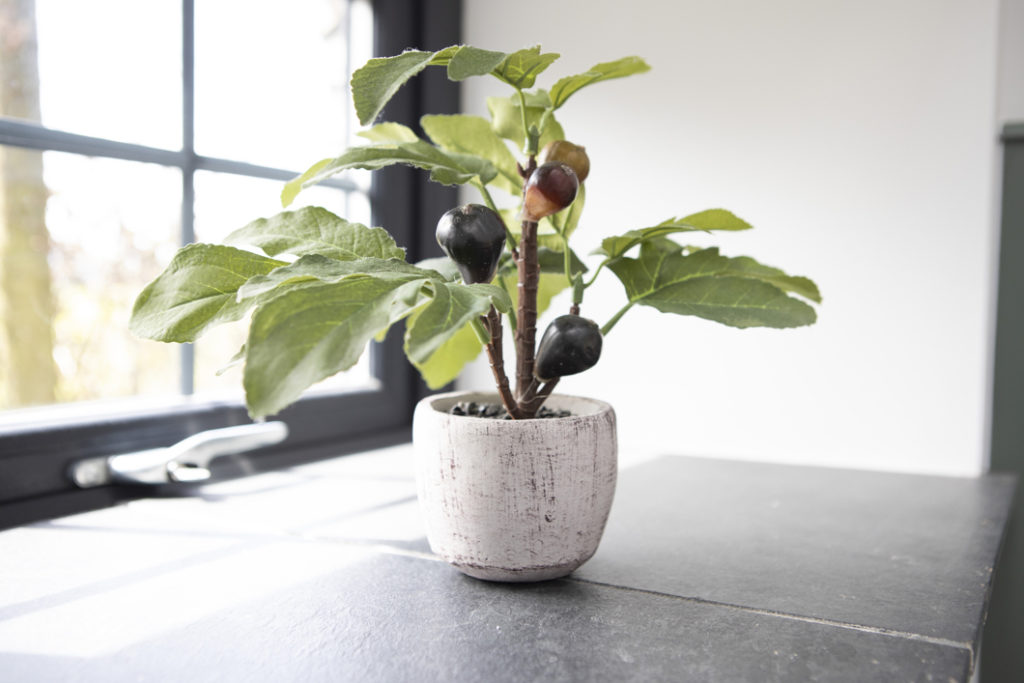
Be sure to note the care requirements below when choosing a suitable spot.
Some more tender varieties should be grown in an unheated greenhouse or conservatory in the UK, while hardier varieties will cope outside across much of the UK.
How To Plant
Figs actually do best and bear the most fruit when their roots are restricted.
It can be a good idea to create a bund underground when growing figs in the garden to keep the roots from expanding outwards.
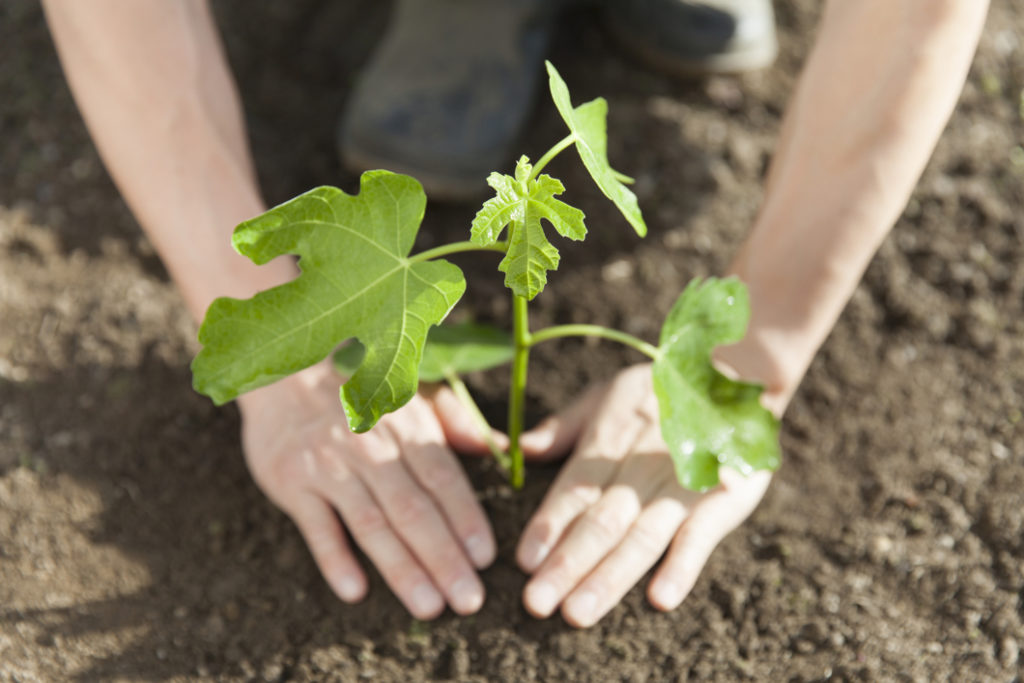
You can use reclaimed paving slabs or blocks to line the planting hole or use a root control bag.
Part filling the planting hole with well-rotted manure or other organic material and rubble can also help with root restriction.
Ongoing Care
Fig trees are borderline hardy for many UK gardens, so it is important to choose the right place for them and to care for them correctly.
Sunlight
Fig trees need a warm spot and as much sun as possible to do well here in the UK.
A sheltered spot close to a south-facing wall can be ideal.
Soil Requirements
Figs will grow well in chalk, loam or sandy soil which is moist but well-drained or free draining.
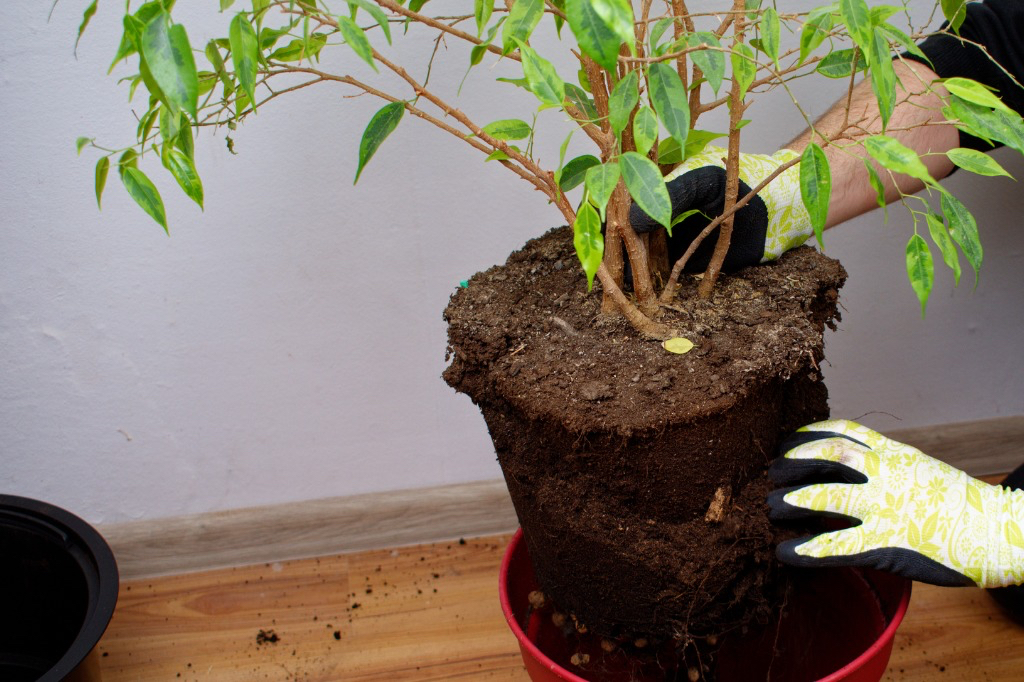
They require a fertile environment with plenty of organic matter and will do best in soil with an alkaline or neutral pH.
Watering
Keep your fig tree well watered, especially when growing in a container.
Keep the medium or soil moist yet not waterlogged throughout the summer months.
Fertilising
Apply an organic mulch upon planting and replenish that mulch annually each spring.
This will help conserve soil moisture, suppress weeds, and slowly fertilise the tree.

It is also a good idea to feed the tree weekly, especially when growing in a container, once fruits start to appear, with a high-potassium organic liquid plant feed.
Container Growing
If growing in a container, choose a suitable large and deep pot, and make sure that there is good drainage.
Make sure that excess water can drain away from the base.
Fill the container with John Innes No. 3 or a homemade equivalent potting mix.
Pruning
Fig trees should be pruned in winter each year to keep their growth in check, and to remove any dead, damaged or diseased material.
This should be done while the tree is dormant, over the winter months.
I find that February is usually a good time to prune.
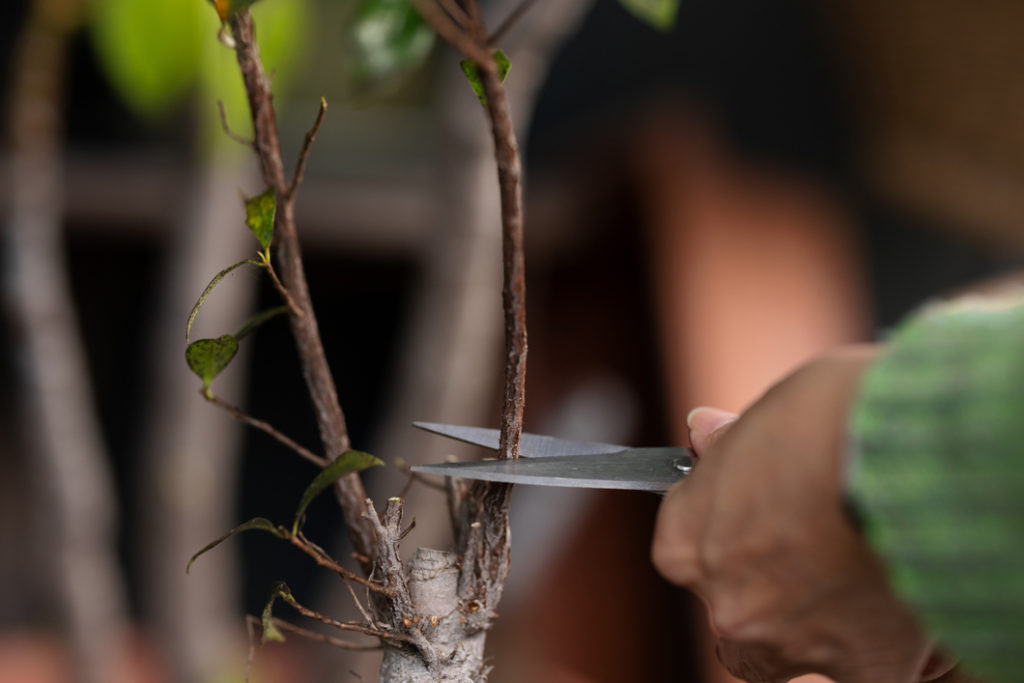
Do not prune once the sap has risen, as these will ‘bleed’ when cut at other times.
“Figs can be pruned as fans on a south-facing wall to optimise the warmth and light reaching the branches,” Master Horticulturist Colin Skelly says.
“These will need to receive summer pruning to restrict their growth. Figs produce an irritant sap from the cut stems.
“From bitter experience, make sure you wear protective long sleeves and gloves when pruning.”
Simply remove some older, thicker branches down to the base to open up the canopy to let light through to ripen the fruits.
Figs can also be fan-trained against a sunny south-facing wall to make the most of your space.
Overwintering
While figs grown in the UK are somewhat hardier types, they will still often need some protection over the winter months in chillier gardens and more northern areas.
This is especially true while the trees are still young.
You can protect outdoors trees with fleece or other coverings, back straw around branches, or move container-grown fig trees under cover into a cool shed or greenhouse that remains frost-free.
Propagation
Fig trees can be propagated by seed, or by means of hardwood cuttings.
Harvesting
Figs can produce more than one harvest a year in warmer climes, but most of the time, only one of these crops will ripen in the UK – which will be ready to harvest in September or October.
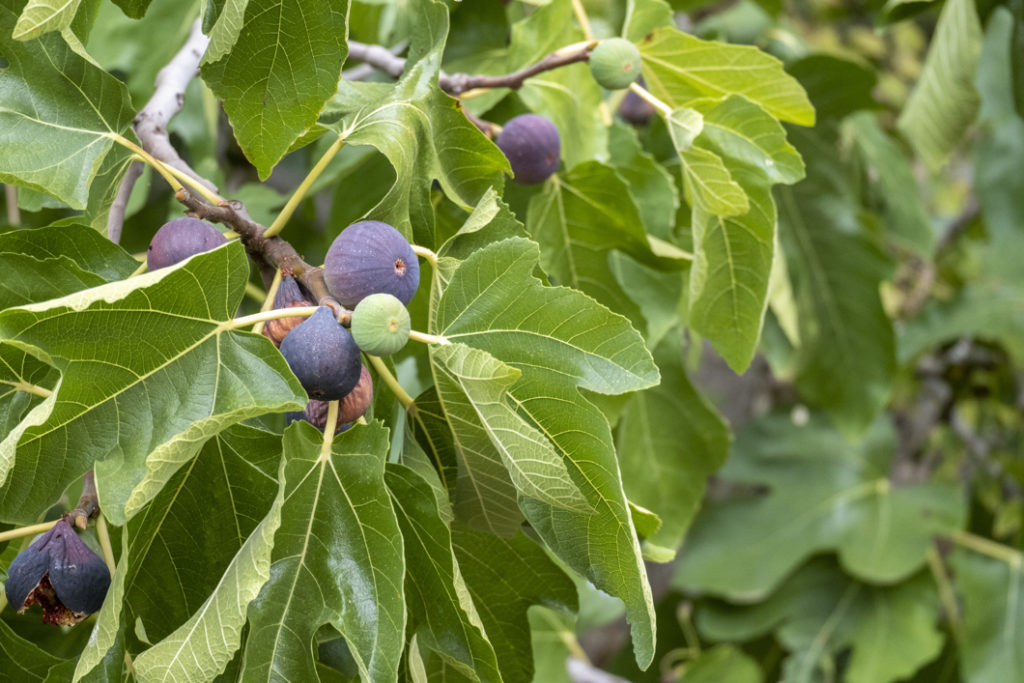
Tiny little figs formed in autumn will develop to provide a harvest next year, but those that formed in spring and early summer that have not ripened by October will not do so.
These should be removed in late autumn.
References
- 1Common Fig. (2003, January 1). Science Direct; Elsevier BV. https://doi.org/10.1016/b0-12-227055-x/00463-6
- 2Noble Wilford, J. (2006, June 1). Figs Believed to Be First Cultivated Fruit. The New York Times. Retrieved March 15, 2023, from https://www.nytimes.com/2006/06/01/science/01cnd-fig.html
